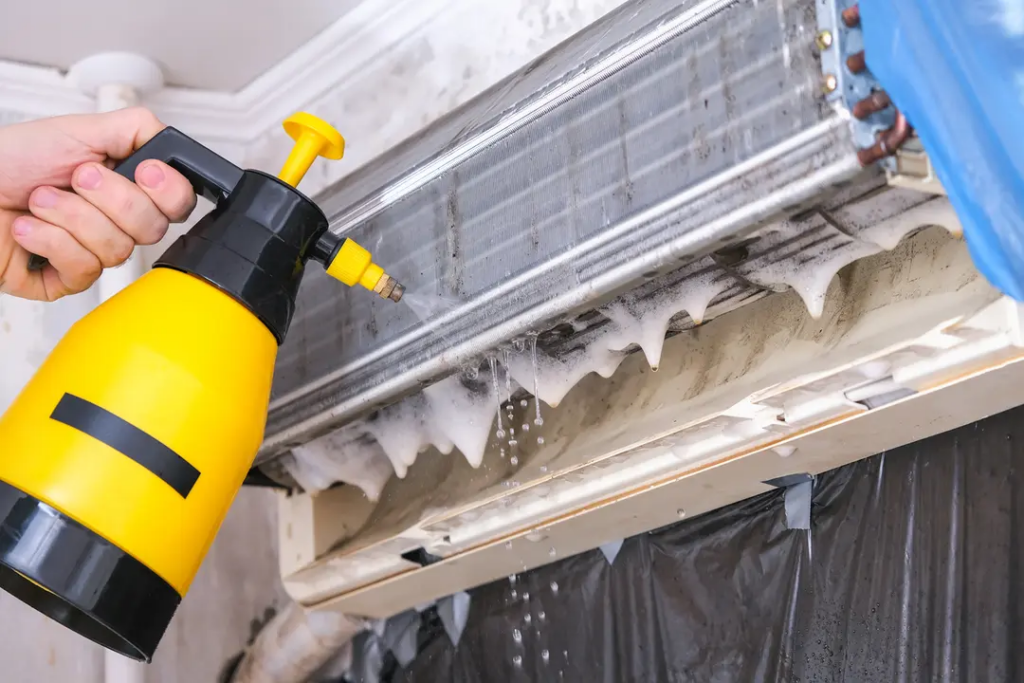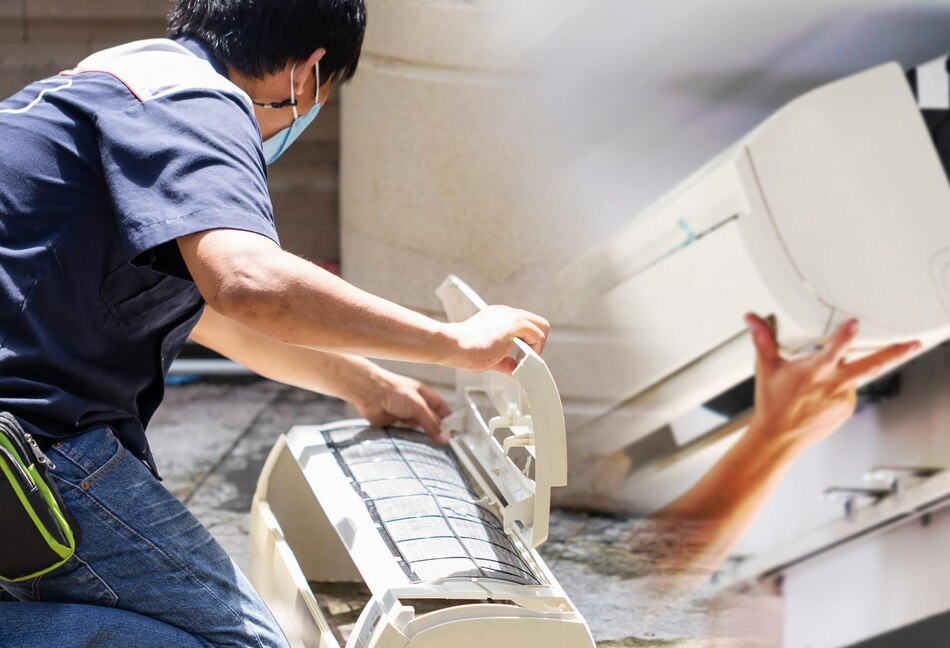Aircon chemical washing is a deep-cleaning procedure performed by experienced technicians to restore cooling efficiency, prevent system breakdowns, and extend the lifespan of your unit. Below is a step-by-step guide to how professionals carry out this intensive cleaning service:
- 1. Inspection and Preparation
- 2. Disassembly of Components
- 3. Chemical Application on Internal Components
- 4. Cleaning the Drainage System
- 5. Outdoor Condenser Cleaning (extra charges may apply)
- 6. Monitor and Top-Up Refrigerant Gas (If Needed)
- 7. Reassembly and Functional Testing
- 🌬️ Why Choose a Professional Aircon Chemical Wash?
1. Inspection and Preparation
Before starting, the technician inspects the aircon unit to assess the cleaning requirements. This helps identify visible dirt buildup, mold presence, and signs of leakage or inefficiency.
Power to the unit is turned off to ensure safety during the procedure.
Furniture, walls, and flooring around the aircon are carefully covered with protective sheets.

2. Disassembly of Components
The technician carefully dismantles key components of the aircon system to gain access to the internal parts that need cleaning:
- Front panel
- Air filters
- Fan coil unit (FCU) cover
- Drain pan
This allows a thorough reach into all areas where dirt and grime accumulate.
3. Chemical Application on Internal Components
A specially formulated chemical solution is applied to dissolve accumulated contaminants such as:
- Mold and mildew
- Dust and dirt
- Bacteria and allergens

These chemicals are safe when handled by professionals and are rinsed off completely to avoid residue.
4. Cleaning the Drainage System
Clogged drainage pipes are a common cause of leaking aircons. The technician will:
- Flush and clean the drainage system
- Remove slime, algae, and debris
- Ensure smooth water flow to prevent future blockages
⚠️ Note: Drainage cleaning may incur additional charges depending on the condition.
5. Outdoor Condenser Cleaning (extra charges may apply)
The outdoor condenser unit, which supports the cooling process, is often overlooked in basic servicing.
- A brush and vacuum are used to clear debris and dust from the condenser fins and fan.
- In some cases, a jet spray is used.
- A clean condenser improves efficiency and reduces power consumption.
6. Monitor and Top-Up Refrigerant Gas (If Needed)
The technician checks the refrigerant gas level to ensure optimal cooling performance:
- If the gas is low, it may cause weak or no cooling.
- A pressure gauge or manifold set is used for accurate readings.
- You will be advised if a gas top-up is necessary.

7. Reassembly and Functional Testing
Once cleaning is complete:
- The unit is reassembled with all parts securely fixed.
- A new or cleaned filter is installed.
- The aircon is powered on and tested for:
- Cooling performance
- Unusual noise or vibration
- Proper airflow and drainage
🌬️ Why Choose a Professional Aircon Chemical Wash?
Getting a chemical wash done by a professional ensures your aircon:
- Runs more efficiently
- Saves electricity
- Improves indoor air quality
- Lasts longer without major repairs
💡 Experts recommend a chemical wash every 6 to 12 months, depending on your usage and environment.



You must be logged in to post a comment.